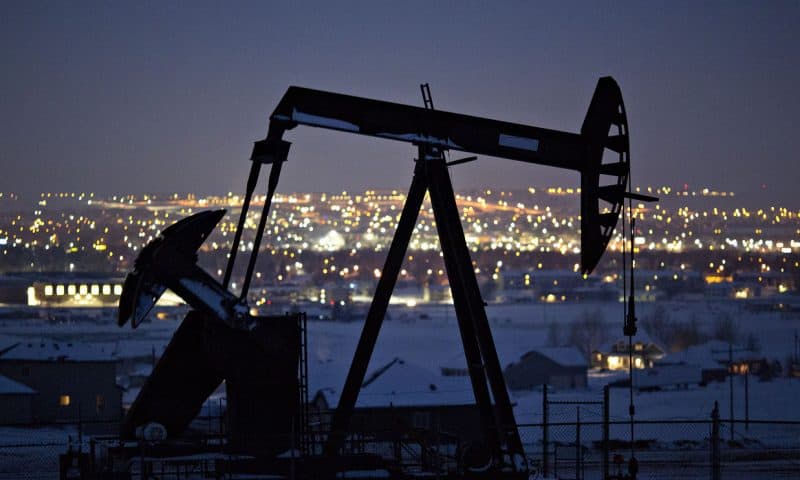Oil futures ended lower Thursday, under pressure after a rise in weekly jobless claims added to concerns about the outlook for demand already shaken by minutes of the Federal Reserve’s last meeting.
West Texas Intermediate crude for September delivery CL.1, -0.72% declined 35 cents, or 0.8%, to finish at $42.58 a barrel, while October WTI CLV20, 0.30%, the most actively traded contract, fell 29 cents, or 0.7%, to $42.82 on the New York Mercantile Exchange. The global benchmark, October Brent crude BRNV20, 0.36%, finished down 47 cents, or 1%, at $44.90 a barrel on ICE Futures Europe.
“The energy market is seen as a good barometer for global demand and seeing as dealers are less optimistic about the state of the global economy in light of [Wednesday’s] Fed minutes, oil has tumbled,” said David Madden, analyst at CMC Markets, in a note.
Crude futures remained lower after data showed the number of first-time U.S. weekly jobless claims rose back above 1 million last week.
Minutes of the Fed’s July 28-29 meeting released Wednesday afternoon said staff economists told policy makers they were lowering their estimate for economic growth over the second half of the year.
Meanwhile, a meeting of the OPEC+ alliance’s Joint Ministerial Monitoring Committee on Wednesday offered no surprises, with ministers maintaining output cuts of 7.7 million barrels a day, but emphasizing the need for countries that failed to cut enough in previous months to make compensatory reductions this month and next.
Support in Wednesday’s session also was tied to weekly inventory data from the Energy Information Administration, which said U.S. crude inventories last week fell by 1.6 million barrels, while gasoline inventories were down 3.3 million barrels. Oil had been under pressure after the American Petroleum Institute late Tuesday reported a rise in gasoline inventories, which would be a bearish sign in the final stretch of summer driving season. The EIA said distillate inventories rose by 200,000 barrels.
But the data didn’t dispel worries about demand as the economy continues to wrestle with the COVID-19 pandemic.
Gasoline demand fell to 8.6 million barrels a day, remaining around 10% lower than in previous years, wrote analysts at Commerzbank. The fall in gasoline inventories was presumably due not only to a fall in gasoline production but also a fall in gasoline imports, that dropped by almost half to 557,000 barrels a day, they said.
September natural-gas futures NGU20, 0.09% dropped 7.4 cents per million British thermal units, or 3.1%, to end at $2.3520. Natural gas extended its fall after the EIA reported a larger-than-expected rise in storage. The agency said natural-gas supplies saw an injection of 43 billion cubic feed in the week ended Aug. 14. Analysts surveyed by S&P Global Platts, on average, had looked for an injection of 39 billion cubic feet.
September gasoline futures RBU20, 1.26% rose 0.6 cent, or 0.5% to settle at $1.2965 a gallon, while September heating oil HOU20, 0.29% gave up 0.43 cent, or 0.3%, finishing at $1.2467 a gallon.

